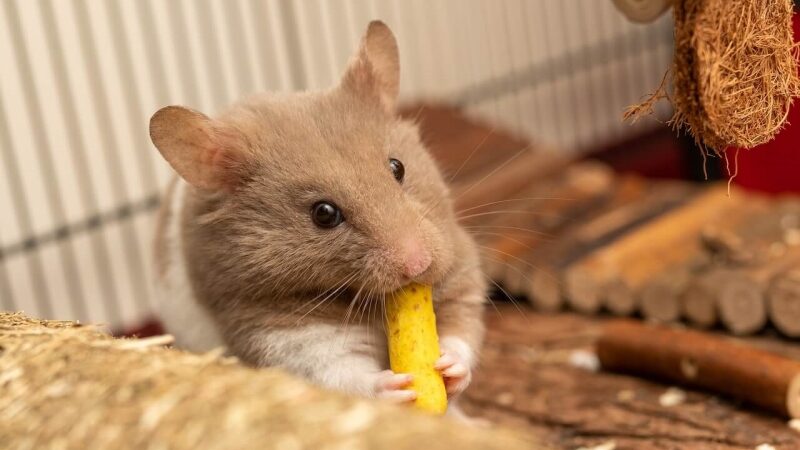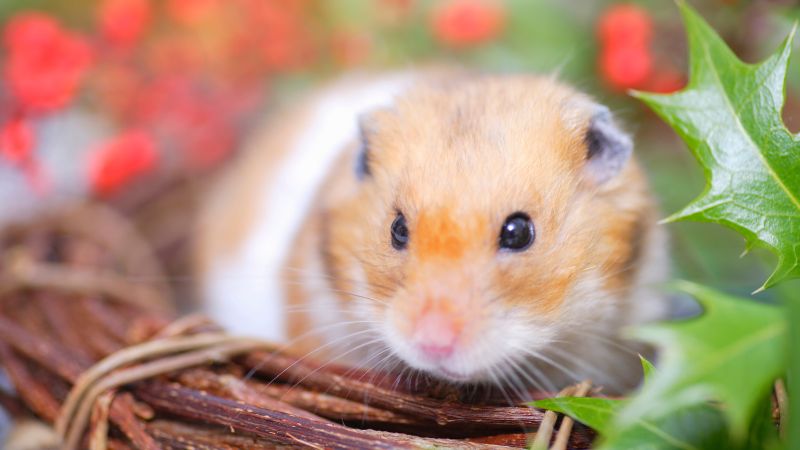
Can You Travel with a Hamster? A Comprehensive Guide
Traveling with a pet hamster isn’t as straightforward as it might seem. It requires careful consideration of your pet’s safety, comfort, and the logistics involved.

Getting a pet hamster can be an exciting and rewarding experience. Hamsters are cute, interactive little pets that can provide hours of entertainment.
However, it’s important to ensure you provide your hamster with a suitable habitat. One of the most important factors in creating a good home for your hamster is choosing the right-sized cage. This guide will walk you through everything you need to know to pick the perfect hamster cage size.
When trying to determine the ideal cage size for your hamster, there are a few key factors to consider:
Hamster species can range quite a bit in size, from tiny dwarf hamsters to large Syrian hamsters. Make sure you know what type of hamster you have or plan to get so you can accommodate their needs. Syrian hamsters typically require the most space.
Length and width are important but don’t forget to factor in height as well. Hamsters love to climb, so taller cages provide an opportunity for more enrichment. The minimum recommended floor space is 450 square inches.
If multiple hamsters are together, more space is needed to prevent conflict. Never house Syrian hamsters together, as they are solitary. For other types, add about 50 square inches per additional hamster.
Hamsters that get time to run around outside their cage each day need slightly less space than hamsters confined completely to their cage. But regular exercise outside the cage is still essential.
Here are some general cage size guidelines based on hamster species:
Again, these are just minimums – bigger is always better for hamster cages!
In addition to species, consider your individual hamster’s personality when selecting a cage. Hamsters with high activity levels or those who love to burrow may appreciate extra space to run around and dig. Monitor your pet’s behavior to see if they seem to desire more room.
If adopting a baby hamster, make sure to choose a cage that will accommodate their full adult size. Hamsters grow quickly, so you’ll want that extra room right from the start.
You can expand the living space for your hamster by utilizing cages with multiple levels or connecting cages. However, be sure tubes connecting levels or cages are large enough for your hamster to fit through.
Once you’ve determined the ideal size, you can begin researching different types of hamster cages. Key factors to consider include:
Proper ventilation helps control odor and prevent respiratory issues. Wire cages or glass aquariums with mesh lids provide the best airflow.
Look for large doors that provide easy access for cleaning and handling your hamster. Top-opening cages are generally the most convenient.
Avoid wire floors which can cause injury. Ensure bar spacing is narrow enough that hams can’t escape. Some plastic cages can be chewed and escaped from.
Deep plastic bases or pull-out trays make cleaning bedding easier. Aquariums usually require full disassembly.
Wire cages are well-ventilated but can be harder to clean. Plastic holds in heat and blocks drafts. Wood looks attractive but is hard to disinfect.
If you plan to travel with your hamster, choose a cage that is easy to transport and set up in different locations.
Hamster cages range widely in price. Set a budget and find the best option you can afford that still meets your hamster’s space and health needs.
Based on the criteria above, here are my top 5 picks for the best hamster cages:
I highly recommend the Woodland Hamster Cage for your furry friend. Its dual-side hollowed design ensures sustained air circulation, while solid wood craftsmanship nurtures a natural habitat.
Enjoy effortless scenic interaction with the one-hand skylight operation, and easy, scratch-resistant cleaning with the slide-out acrylic feature. Its panoramic visual delight offers 360-degree unobstructed viewing, complemented by the original petal roof design that adds a touch of delicate aesthetics for the owner.
A true haven for your hamster!
Once you’ve selected the ideal cage, it’s time to outfit it to meet your hamster’s needs! Here are some tips:
Beyond cage size and setup, there are other things you can do to keep your hamster healthy and content:
With the right-sized cage filled with enrichment items, your hamster will have a healthy habitat to call home! Provide attentive care and monitor their needs. With proper housing and handling, your small pet will thrive!


Traveling with a pet hamster isn’t as straightforward as it might seem. It requires careful consideration of your pet’s safety, comfort, and the logistics involved.

Finding the best hamster cage for Syrian hamster is crucial, as these curious, low-maintenance, and independent pets thrive in the right environment. The primary concern

When I began, the task of selecting essentials for a natural hamster habitat was daunting. To ease this process, I’ve assembled an exclusive set of

Have you ever wondered, “Are hamsters happier in bigger cages?” Generally YES. It’s a question that might seem straightforward, but there’s more to it than

Traveling with a pet hamster isn’t as straightforward as it might seem. It requires careful consideration of your pet’s safety, comfort, and the logistics involved.

Finding the best hamster cage for Syrian hamster is crucial, as these curious, low-maintenance, and independent pets thrive in the right environment. The primary concern

When I began, the task of selecting essentials for a natural hamster habitat was daunting. To ease this process, I’ve assembled an exclusive set of

Have you ever wondered, “Are hamsters happier in bigger cages?” Generally YES. It’s a question that might seem straightforward, but there’s more to it than
Copyright © 2025 woodhamstercage. All Rights Reserved.